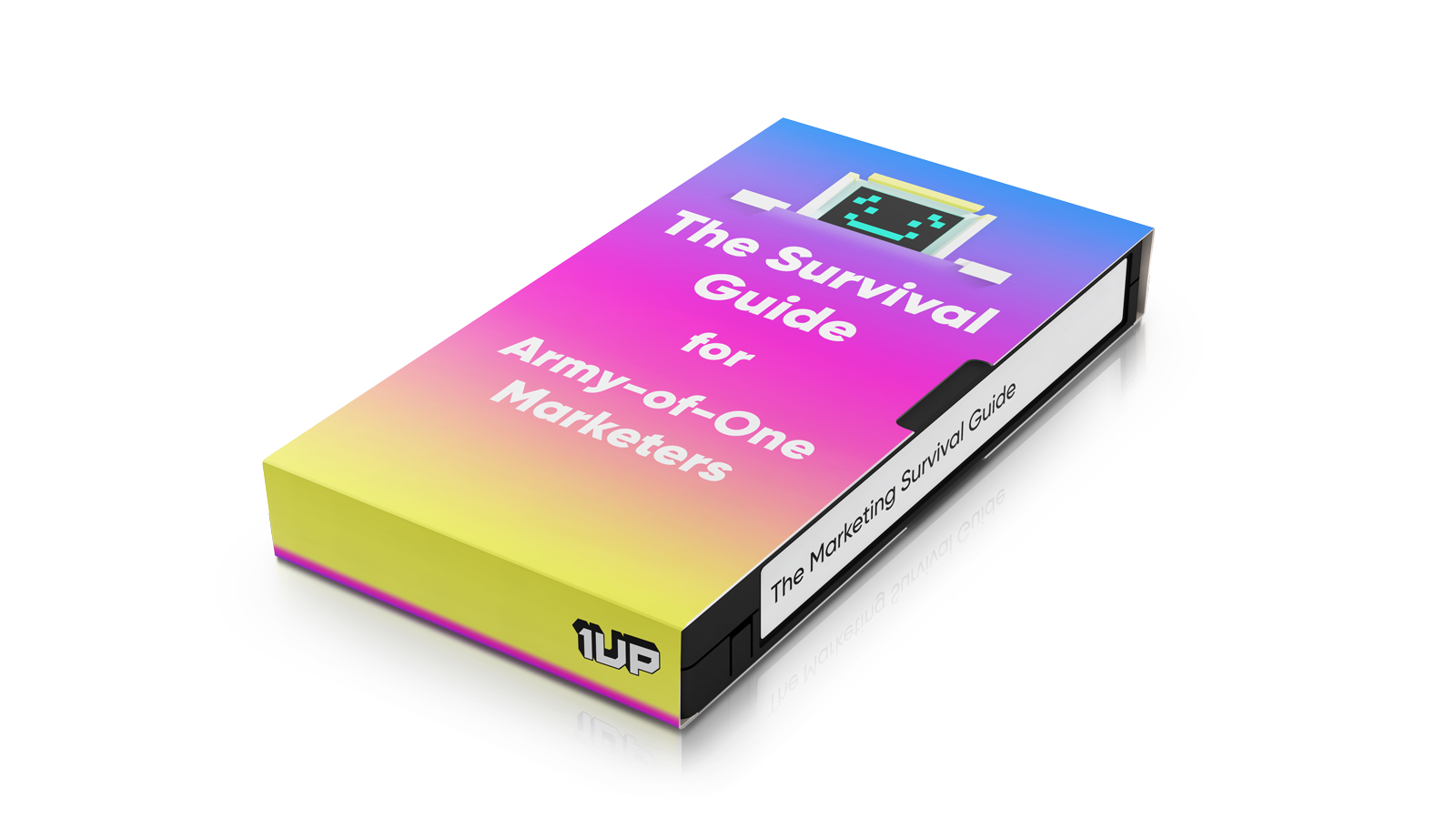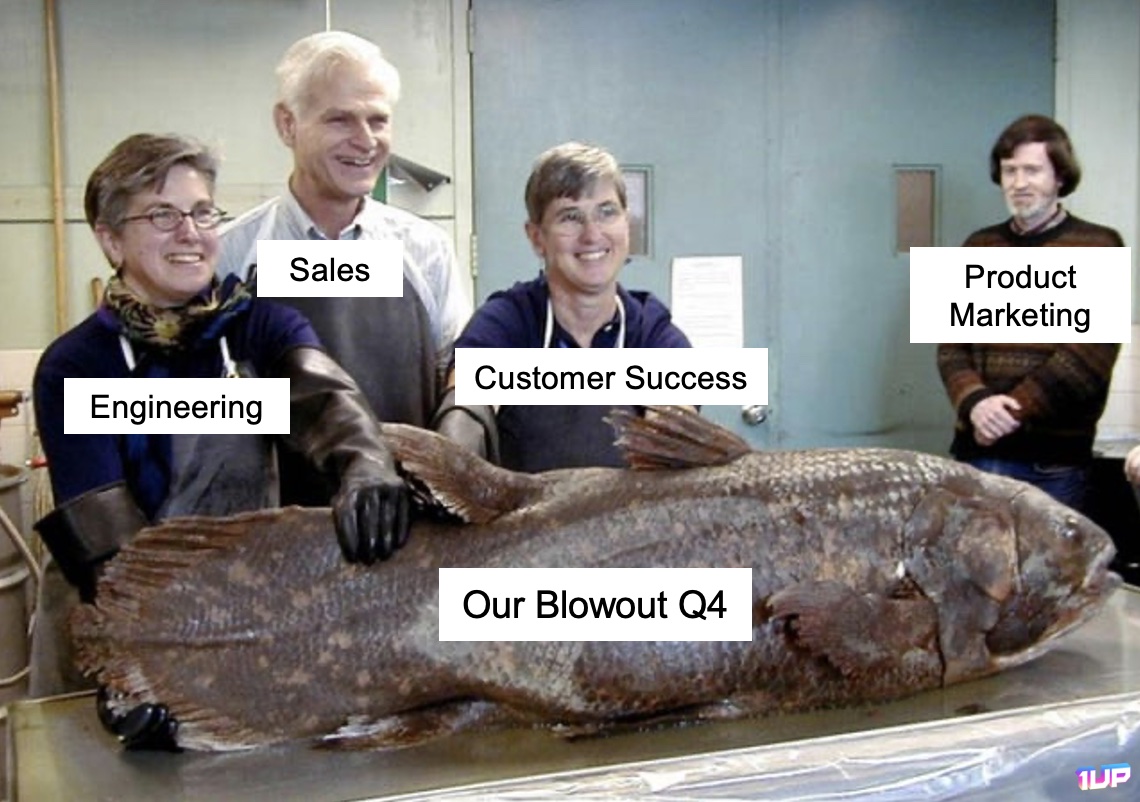This is a guide to surviving as a one person marketing team in 2025.
Expectations of you are high as a one person marketing team. Your budget is tight and your resources are strained. At times, It feels like the weight of the world rests on your shoulders.
Sound familiar? Well, you’ve come to the right place!
Key Takeaways
- In the age of AI, Search Engine Optimization (SEO) has come under closer scrutiny. It’s as important as ever, and focusing on human-generated content will create a differentiator for brands on both a user experience and technical level.
- Product Marketing is a top priority as industries have grown crowded and long-form written content has fallen out of favor with user attention spans. Focus on visuals, product demos, videos, and differentiated messaging to boost engagement.
- The physical world happens to still be a thing, so we’re seeing an aggressive push towards field marketing. Focusing on smaller, intimate events can be a force multiplier for brands who want to make their real-world presence known.
Who Is This One Person Marketing Team Guide For?
Startups
You are, literally, a one person marketing team. You’ve been tasked with growing the business at its earliest stages. You are likely under-resourced and overwhelmed. Prioritizing work is a challenge. And you’re always operating between two extremes – short term gains and long term impact.
Medium/Growth Stage Companies
You might not be alone in the marketing department, but you’re still wearing multiple hats. Maybe you’ve been assigned to a new marketing project you’ve never done before. Or you’ve been hired at the chaotic growth stage of a company investing in new marketing channels. Perhaps the CEO saw “Product Marketing” on your LinkedIn and just assumed you can run a Google Ads campaign (I know, eww).
Lone Wolves at a Big Enterprise
If you’re a one-person marketing team at a big company, this guide is not enough for you. What you probably need at this point is a good therapist. Jokes aside, you probably have your hands full heading up a small team or launching a new product line. If you’re handling multiple roles in a big company, then use this guide as a cheat sheet.
How The Marketing Survival Guide Is Organized
Some of the contents of this guide might be more relevant to you than others. It will probably come down to the size of your company and the maturity of your marketing program. For example, late stage companies can invest heavily in events, while newcomers don’t have a big enough budget for this channel.
Feel free to skip ahead and focus on the parts that resonate with you and are relevant to your marketing program.
1. Launching a Website
Level of Effort: High
Time to Value: Weeks
TLDR: Launch a simple website. Prioritize usability and speed over fancy designs.
Your Website Is the Foundation of Your Marketing Strategy
The website is your storefront. It’s the first thing your prospects, customers, investors, and employees will see. It’s open 24 hours a day, constantly making first impressions. You can do everything else on this list to perfection and none of it will matter if your website misses the mark.
What Businesses Get Wrong About Building Great Websites
Most people have never built a website. They don’t know what good or bad looks like. Marketing managers are no different, many of them inherit an existing website or might not be very involved in its development.
Marketing managers can be in a position where they consider their website secondary to their mission of generating more business – as if building and maintaining a website were distractions. They are often under pressure to deliver leads and nothing more. This pressure can lead them to neglect the quality of a website in favor of other tasks like demand generation or advertising.
Get your site right. As a marketer under pressure there’s always a risk of ending up with a cheap, mediocre website. Or worse, overpaying an agency in the pursuit of speed over quality.
George Avetisov, 1up.ai
Your teammates may not understand the importance of a great website. They don’t know that a marketing funnel consists of multiple interactions with your site before a lead even thinks about converting. This disconnect can lead to frustration among teammates or higher ups who see a prolonged website development as a delay rather than what it is: the most important investment in your marketing strategy.
Common Mistakes When Launching a Marketing Website
Overpaying an agency
An agency is a great idea if you have the budget. If you’re strapped for cash then working with a 3rd party will create more stress. You don’t need to spend thousands of dollars on a custom website when there are countless low-cost CMS platforms and templates.
Key person dependency
You hired a contractor to build the website? Great. Keep them on speed dial. Marketing teams often sever ties with the developers who built their website. This happens more often than it should and can lead to a maintenance nightmare down the road. Someone on your team should always be able to add, edit, or update content.
Glitchy websites
Expired SSL certificates, broken links, UI bugs, and slow load times lead to a poor user experience. You’d be surprised how many website owners leave these issues unattended. Don’t be lazy or assume visitors won’t notice. Customers see everything. Even an out-of-date copyright label in your footer could hurt your brand’s credibility.

Building a website you can’t handle
A big website is not easy to maintain. Just because your competitor has a website with over 10,000 pages does not mean that you should too. You also don’t need a complicated template system with lots of moving parts. Focus on quality over quantity, and it will be easier to handle.
Overdoing it on design
Great design is important but it’s not the whole story. There isn’t a single user who said “I chose Amazon because the site was prettier.” Amazon’s eCommerce site prioritizes user experience and performance above fancy design. Not convinced? Read about their study on the impact of 100ms latency.

Ways To Make Running a Website Easier
Write the copy first
Whether it’s a single page or several categories of pages, writing the copy first will make everything else easier. The shape of your copy will help you understand your website structure, information hierarchy, and density. All of these important elements can greatly accelerate and simplify the design phase.
Choose an existing template
It can be tempting to hire an agency to build you an advanced custom website worthy of an award. But if you’re a small team there’s just no reason to reinvent the wheel. Choose one of the thousands of templates from a platform like Squarespace, Wix, or Webflow. Brand it your way, load up your content, and you’re good to go.
For a more custom look, you can hire a designer to enhance the template – just don’t fall into the trap of thinking you have to build everything from scratch.
Setup Google and Bing search consoles
Generate a sitemap and submit it to Google Search Console as soon as your site is published. Most marketing managers don’t come here often, but if you’re a team of one you should definitely manage this yourself.
Bing is an often-neglected, untapped water hose of traffic. If you get your website indexed early and focus on SEO, this search engine will pay dividends down the line. The recent hype around Bing’s ChatGPT integration should also serve as a reminder not to ignore this channel.

Pro Tip: Manually index your pages using this feature in the search console:
Many people don’t know that you can manually submit pages and Request Indexing if you feel that they aren’t getting picked up by Google. It certainly doesn’t scale – you can’t submit more than a dozen per day – but it’s worth it for important pages.

Install Google Analytics early
More on this in the analytics section. Get this up and running on Day 1 so you know what’s going on with your website traffic beyond just form fills.
Helpful Tools for Running a Website Alone
- Use a heatmapping tool like CrazyEgg or Hotjar to track user interactions.
- Integrity scans your website for broken links. Run a periodic scan to find out what pages need work.
2. Search Engine Optimization (SEO)
Level of Effort: High
Time to Value: Months
TLDR: Start SEO early and make it a part of your marketing DNA.
Great SEO Can Make You the Leader in Any Industry
This is the marketing tactic that still flies over most people’s heads. SEO is the “diet and exercise” of marketing. We know it’s good for us, but few actually take it seriously.
SEO is the game changer that can make you a leader in your space. You could do nothing else on this list and become the leader in your industry simply by ranking high on Google.
And if it wasn’t already important, SEO has become a good deal more important in the past few years as marketers have slowed down on Pay-Per-Click advertising in favor of organic search.
What Marketers Misunderstand About SEO
Most people have never done SEO, have no idea how it works or where to begin. The lack of knowledge leads them to hire an agency to “do SEO” (whatever that means.) When results are unclear or take too long to appear, the agency gets blamed or fired.
The impact of search engine optimization can take months to appear even with a ton of hard work by people who know what they’re doing. This can create the feeling that you’ve wasted time on ineffective marketing. As a result, most people give up on SEO because they are not seeing quick results.
To an uninformed leadership team, SEO can look like fake work.
“You said that by writing blog posts we would move up on Google. It’s been 2 weeks and nothing has happened. What are you even doing here?”
Unfortunately, this breed of conversation happens too often.
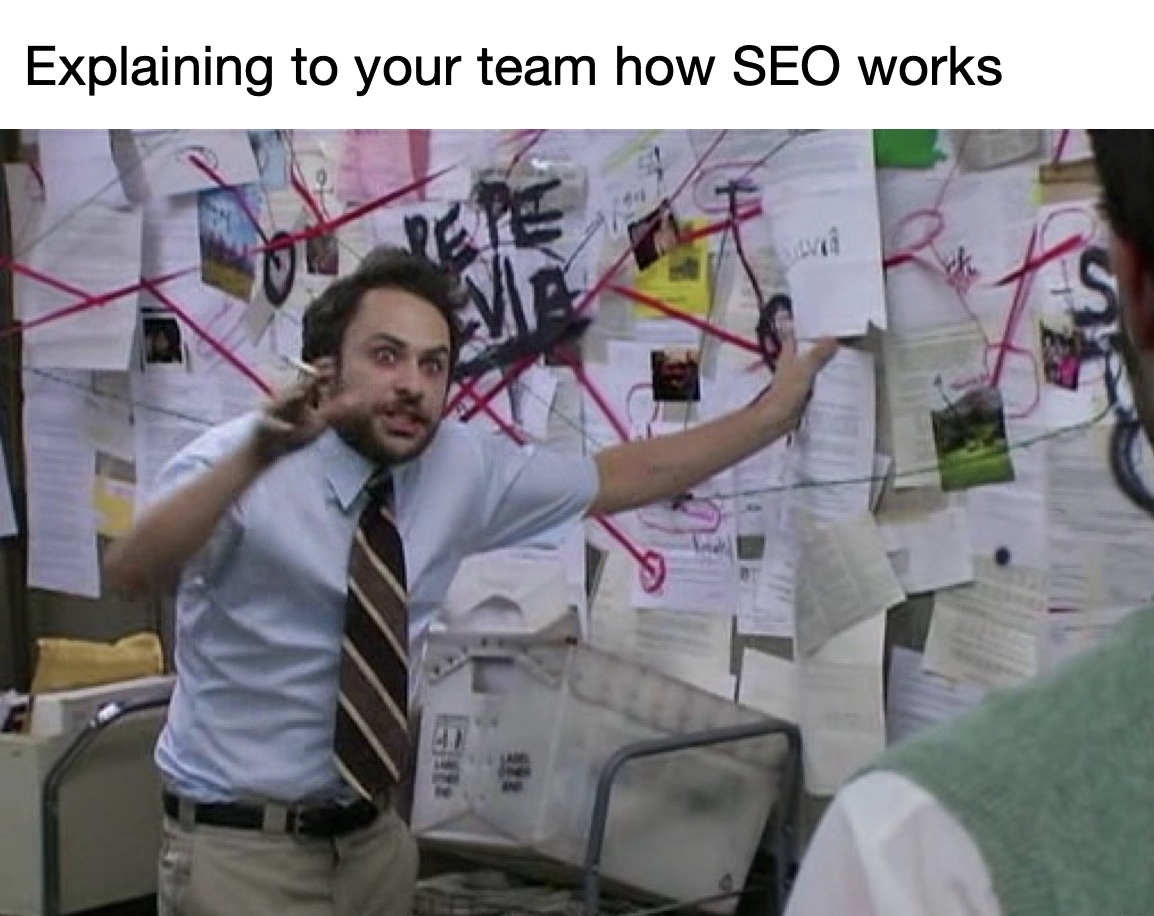
To make matters worse, SEO experts have convinced everyone that you need to hire a “search engine wizard” to see results. This is false.
Yes, there is a level of technical skill and past experience that is key to success in SEO (as with any marketing role), but the notion that you need to hire an expensive consultant to achieve a baseline level of optimization is nonsense.
Common SEO Mistakes
Starting too late
You have hundreds of pages on your website – tons of images, videos, blog posts, and content – but none of it has been optimized for Google Search. You can try to fix it all overnight but it will still take a while for Google to reconsider your website’s rankings. The later you do this, the longer it will take to have a positive impact.
Outsourcing SEO to an agency too early
We’re going to strongly advise against this. An SEO agency can charge a ton to do the basics which can easily be done in-house. At later stages, they can become an effective force multiplier for your efforts. This guide is focused on teams of one – so we’re not going to suggest you involve an agency.
Thinking it will happen overnight
SEO is a game of 2nd and 3rd order consequences. You optimize your content and then you wait.
You wait some more.
You keep waiting. It’s getting frustrating.
Finally, you check the traffic reports and notice some organic search visits. It feels good.
SEO results can take weeks or months to arrive. Set your goals and manage the expectations of those around you.

Overdoing it
It’s wrong to start with SEO and work backwards from there. Why? Because creating content for the sake of ranking on a keyword can lead to a ton of low-quality content on your website.
For example, if you’re trying to rank on “Engagement Rings,” don’t make your page title “Cheap and Expensive Diamond Engagement Rings with Real Diamonds and Wedding Bands.” This looks spammy and will lead to a poor user experience, which will adversely impact your SEO efforts.

Adopting bad practices
There are many sleazy tricks to try to get your site ranking higher on Google. None of them are worth the penalty. Avoid these SEO tactics at all costs:
- Keyword stuffing and overloading your webpages with keywords you’re trying to rank on. This tactic hasn’t worked for over a decade and people still try it. Google sees this and penalizes companies who do so.
- Buying backlinks from spammy websites is a one-way ticket to search engine jail. If the number of low-quality links to your website exceeds a certain threshold, you can be penalized by search engines.
- Paying for low-quality content such as guest posts, blogs, or reviews. The content itself might not be terrible, but search engines have gotten pretty smart about websites that cater sponsored content exclusively. Overdoing it on paid posts can get your site penalized.
Missing out on link opportunities
Someone wrote a great article about your company? Great! Now ask them for a backlink. If you don’t, you’re missing out on a huge opportunity. SEO professionals dream of getting unsolicited backlinks like this. Every link to your website tells search engines they should rank you higher.
Focusing on SEO in an early market
There is such a thing as too early. A groundbreaking technology might be exciting to some, but it can take time before there is significant market awareness and demand. If there is no demand, then don’t overdo it on SEO at this stage. When in doubt, use a keyword traffic forecasting tool like the Google Keyword Planner to gauge the viability of an SEO campaign.

How To Get SEO off the Ground Quickly
Create a list of keywords you want to rank on
This could be as simple as 3 phrases that you really want to see your site rank highly on. Even if these keywords are highly competitive and difficult, they can serve as your north star. You should be able to recite them off the top of your head.
Focus on on-site optimization above all else
Learn how to optimize your webpages for SEO. Title tags, URLs, Headers, Body text…start with the basics. If you can get this part right, you’re already ahead of many of your competitors. Moz has an excellent guide on on-site optimization.
Create a knowledge base for your industry
An encyclopedia for your sector is a great way to create helpful content that drives traffic and the perception of your site as an authority in your space.
For example, if you sell LED lighting online, you could create a glossary for all the technical terms associated with LEDs. Your site will rank on these terms and while the traffic may not be qualified, you will still benefit. The pages that rank well can increase the SEO of your website overall.
Blue Nile’s diamond education guide is an excellent example of this:
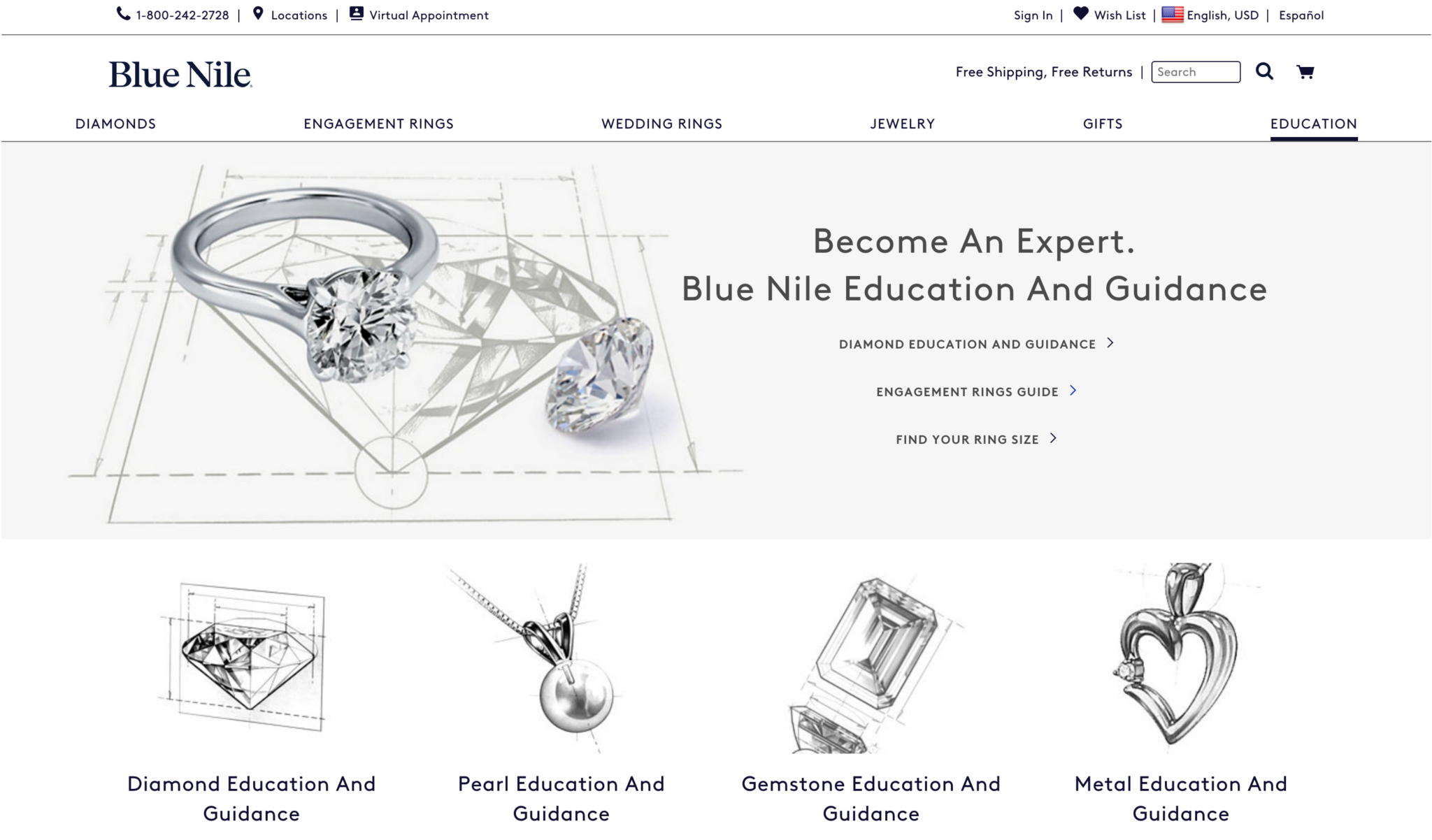
Link pages to each other
Some people think backlinks from other websites are all that matters, but that can take a while to develop. A key Google ranking factor is the number of internal links you have between pages. Inter-linking pages is something you can do early on to get search engines to look favorably at your site.
Keep page size under 1MB
Search engines don’t like big webpages. Setting a page size limit for your website is an important design consideration which can give you a huge advantage. Marketers get this part wrong because they tend to overdo it on big, high-resolution images. You need to find a balance between performance and design. Aiming for a 1MB page size limit is a good way to start.
Helpful SEO Tools for Marketers on a Budget
- Check how your site loads with WebPageTest
- Ahrefs is the gold standard among SEO tools
- MOZ Keyword Explorer is an older but trusted tool for keyword analysis
- Use Google Keyword Planner and Google Trends to explore the popularity of a phrase
Want more 🔥 guides like this?
Subscribe to our blog for early access to content like this.
3. Pay-Per-Click (PPC)
Level of Effort: High
Time to Value: Months
TLDR: Less is more. Keep campaigns small with tight control of budget.
Is PPC a Waste of Money?
Yes. And no. But also yes.
This is the marketing tactic that stirs up the most controversy (and pain). Paid search and display advertising is one of the fastest ways to drive traffic…and one of the easiest ways to light money on fire.
An entire library can be filled with advice on paid search and display advertising. This guide will (mercifully) only focus on high-level do’s and don’ts.
PPC Can Cause Stress
Look at the Google Ads interface. It’s intimidating. CTR, CPM, ROAs, Marginal CPA…what does any of this mean? One wrong move, and you can drain the company credit card in an hour.
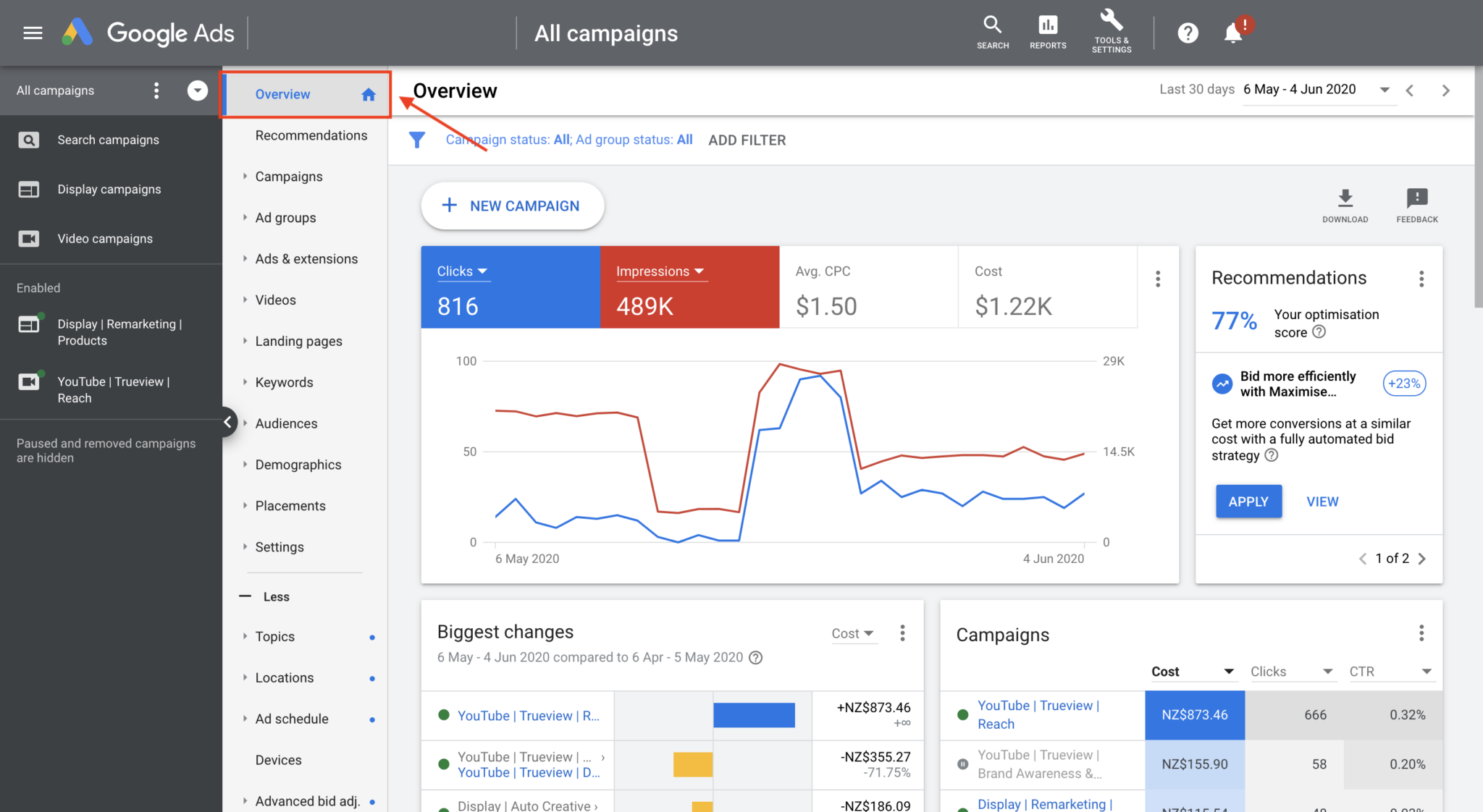
No other marketing channel can cause that much stress in such a short time. It is for this reason that marketing managers often outsource PPC as they do with SEO. And more often than not, this is outsourced to the same agency.
Whether you outsource this function or run it in-house, there are some pitfalls to avoid.
Common Paid Search Mistakes
Running PPC too early
Make sure your business is ready to handle paid campaigns. You’ll need to establish a meaningful budget because it can get expensive. You also need to be able to handle the traffic.
If your sales motion isn’t set up correctly, you’re going to be throwing money away on Pay-Per-Click Ads. Imagine driving a ton of qualified traffic into your funnel only to find out your product or sales process is unable to handle the influx of signups. Not good.
Managing too many campaigns
We’ve seen small startups run campaigns with thousands of keywords across hundreds of ad groups. There is simply no reason for this level of complexity. Running that many campaigns takes a lot of brain power. As a small marketing team, you need to be able to minimize cognitive load. Focus your fire on a small set of keywords instead of doing something like this:

Over-optimizing by region, demographic, etc.
There is a temptation to pull every lever and push every button in a paid ads interface. Over-optimizing by geography or time zone or whatever can be effective at scale, but you need tons of traffic for this to matter.
Overpaying an agency
Marketing teams think they can hand PPC off to an agency and not give it another look. Give them a $10k budget, and they’ll turn it into $20k. Sadly, it doesn’t work that way. PPC takes time, effort, and consistency. With an agency, you can easily rack up high costs early on as you refine your campaigns.
Again, we’re not saying you should not use an agency – just manage your expectations. Successful ad campaigns are the product of many optimizations over time. You’re not going to triple your ROI on day 1 or even day 10. Be prepared to work with your agency for 3, maybe 6 months before you can make a true performance assessment.
Burning money on LinkedIn ads
There is no justification for this at most stages of your company’s growth. Until you have a sizable marketing budget with room to experiment, avoid this screen at all costs:

Using “Broad Match” keywords
No matter how much Google wants you to use them. These can bring in a ton of irrelevant and unqualified traffic. Unless you know what you’re doing, focus exclusively on phrase match and exact match keyword types.
Enabling all of Google’s suggested “optimizations”
Remember that Google Ads wants you to succeed, but only so long as they maximize revenue. Most of the optimizations they suggest are designed to squeeze more out of your budget. Be skeptical of the suggestions you see and never activate them unless you know what you’re doing.

Not tracking conversions
You’re bidding upwards of $2 per click, but you don’t even know if your ads are converting? Pause your campaigns until you get your conversion tracking setup right.
Running Search and Display ads in the same setting
Disable this immediately. You have less control over where your ads appear and the display network can eat up much of your search budget.

How To Get Good Results Quickly With PPC
Focus on a small set of keywords and work your way up
People will tell you to run multiple campaigns, split test dozens of ads, and let Google automate everything from bids to ad optimizations. That’s a great way to incinerate your marketing budget 🔥🔥🔥
Instead, choose a small group of phrases that you think will drive meaningful traffic. Set a fixed daily budget and test only a couple of ads against each other. With a few keywords, a single landing page, and only 1 or 2 ad types, you can learn a ton from results that you can make sense of.
Focus on retargeting
If you were down to your last marketing dollar, retargeting should be where you spend it. Set up an audience of Website Visitors. Create a display ad campaign that targets them. Bid as low as possible. This is a quick, cheap, and easy way to get your company in front of users who have previously engaged with your brand.

If you hire someone to manage your campaigns, be aware of what they’re doing
Paid search isn’t for everyone. There’s too much going on and it’s easy to get overloaded with data. It’s recommended you work with a specialist who knows what they’re doing. Whether it’s an agency or outside contractor – be explicit that you want an understanding of how they’re running your campaigns. Don’t let it become a black box.
For B2B marketing, focus on Google and (maybe) Bing search
Prioritize paid search at the Big 2. Ignore LinkedIn ads if you’re tight on budget – while it can be an incredibly effective channel for B2B, it’s also notoriously expensive. Don’t fall into the LinkedIn ads trap too early.
For B2C, try Facebook, Instagram, and TikTok
Twitter can be a tempting channel for paid marketing but it’s notorious for high costs and low conversion rates. Avoid Twitter until later stages where you have the freedom to run brand awareness campaigns without an explicit ROI goal.
Additional Tools To Help PPC
- Clickcease for reducing click fraud
- Semrush for managing ad campaigns
4. Social Media
Level of Effort : High
Time to Value: Weeks
TLDR: Post and comment every day. Try to have fun and don’t overthink it.
Social Media Is the Great Equalizer
It’s the only channel where creativity can outpace big budgets. Social media is a low-cost way to reach your audience and start generating traffic. It also requires consistency, repetition, and a high tolerance for pain.
Are you willing to create and post content that gets zero views? Can you do this for months before seeing any results, and potentially even longer before you see any revenue?
If yes, this marketing channel is for you. If you’re able to make it over that hurdle, you can end up with an engaged audience of potential customers that sees you daily and grows exponentially.
What Marketers Forget About Social Media
It is not a sales channel.
Yes, you can get in front of tons of qualified buyers on a daily basis with social media. But generating leads should not be the objective of your social media campaign.
No one goes to Twitter to download an e-Book. They’re trying to get away from work, not do more of it. Posting gated content on social media with the hopes of generating email leads will lead to disappointment.
The goal of social media efforts is attention. There is a huge opportunity to grab your buyers’ attention on a daily basis. Whether you’re making them smile with a meme or teaching something new with your latest report, the objective is to get as many eyeballs on your content as possible. Then, eventually, some of them might become customers. That is how you should think about your social media.
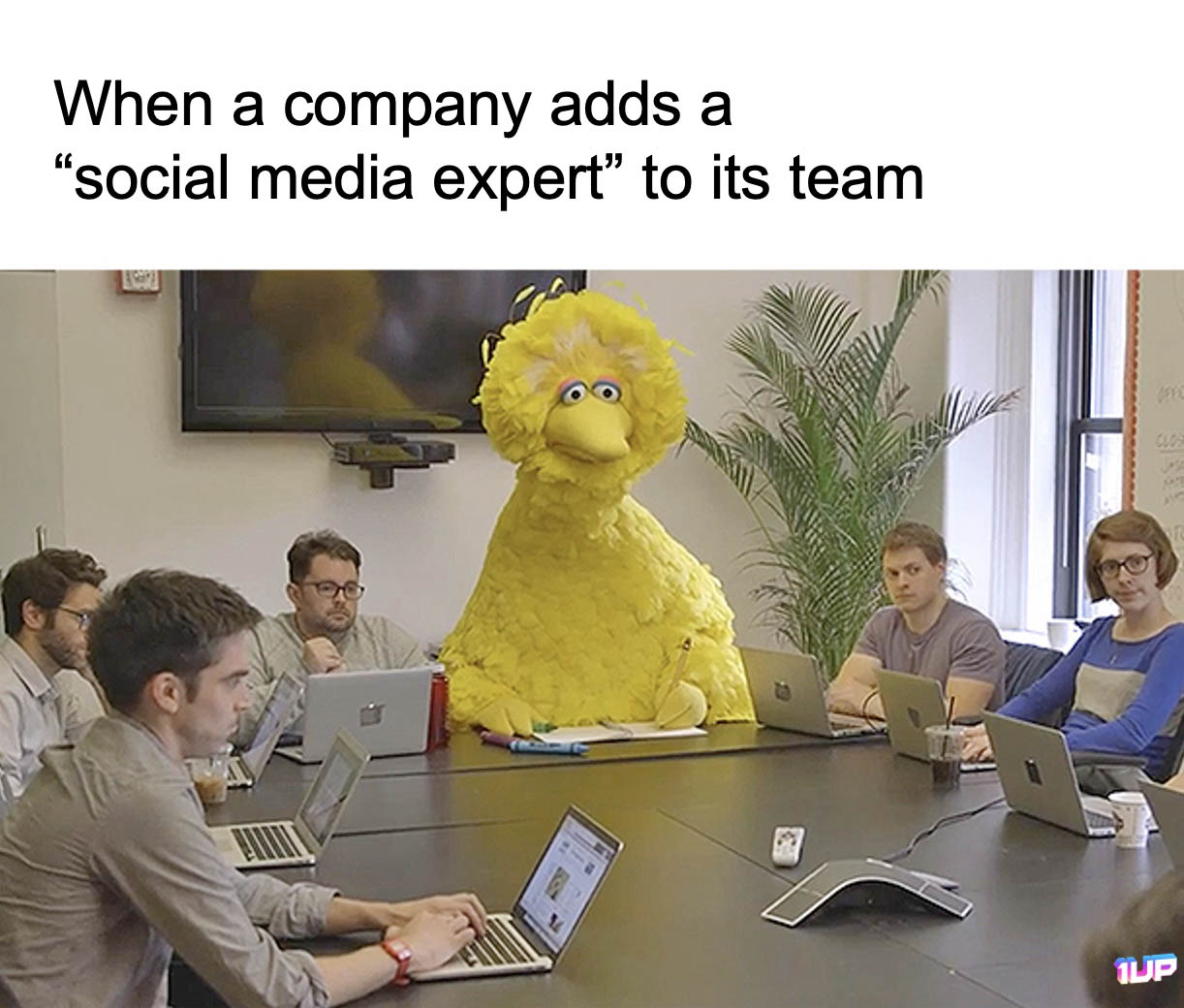
Common Social Media Mistakes
Not posting at all
Many brands put up a company page then do nothing with it. Others will put out a great piece of content then disappear and post nothing for days or weeks after. Big mistake.
Expecting to go viral
Knowing whether a post will go viral is like knowing whether a stock will go up or down. Lower your expectations about ‘virality’ and you’ll avoid disappointment.
Posting boring content
Just because it’s on your website does not mean it belongs on your social media pages. Check out our guide on why B2B marketing is boring and how to make it engaging.
Posting too often
Spamming people’s feeds is a one-way ticket to nowhere. There’s nothing wrong with replying to everyone or frequently commenting on other threads, but posting too much will likely annoy your users and upset the algorithms. In fact, your posts can get suppressed if you overdo it.
How To Get Good Results Quickly
Engage with other people’s content
This is the one thing everyone overlooks because it seems counterintuitive to developing your brand. If you look at successful brands, you’ll notice that they don’t just spam your news feed with their posts. Strong brand pages will comment and reply to others in their news feeds. Social media algorithms take notice of this and boost visibility for engaging with others.

Focus on 1, maybe 2 social channels…that’s it
You can’t boil the ocean. Focus your efforts on one channel. You can syndicate content across multiple brand pages, but put real time and effort into developing a single page. For B2C, focus on TikTok or Instagram. For B2B, LinkedIn and Twitter.
Chunk your content into multiple social media posts
You made a 2-minute video? Great. What you really made was 4 separate video posts.
- Post the video on Social Media
- Transcribe the video into a blog post for your website
- Convert the blog post into a long-form social media post and post it again
- Take 3-5 screenshots from the video and create a LinkedIn Carousel
Recycle old posts
A lot of people worry about posting the same thing more than once. They think their followers will perceive this as spammy behavior. What if we told you that most of your followers never even saw your first post? Recycling old posts is a powerful way to maximize value out of existing content. Marketing strategist Finn McKenty has a great explainer of this.
You will get tired of your own content much sooner than your audience does. Before you go to the time and cost of making brand new content, make sure that you have squeezed everything you can out of the content you already have!
Finn McKenty
Tools for Social Media Managers
- Canva for free designs and post templates
- SocialBlade social media analytics, trends, and monitoring
- Manage multiple accounts with Sprout Social
5. Events
Level of Effort : High
Time to Value: Months
TLDR: Everything happening outside the event is just as important. Book meetings, dinners, parties, and as much face-time as you can so you’re not sitting around waiting at a conference booth all day.
Is Event Marketing Still Relevant?
Participating in a real-world event is still one of the easiest ways to get face to face with a qualified audience. It requires no technical ability, metrics like CTR and ROA don’t matter, and companies of all stages and sizes can get value out of it quickly.
There are many types of events. For the purpose of this guide, we’ll focus on industry conferences and how to maximize value from them.
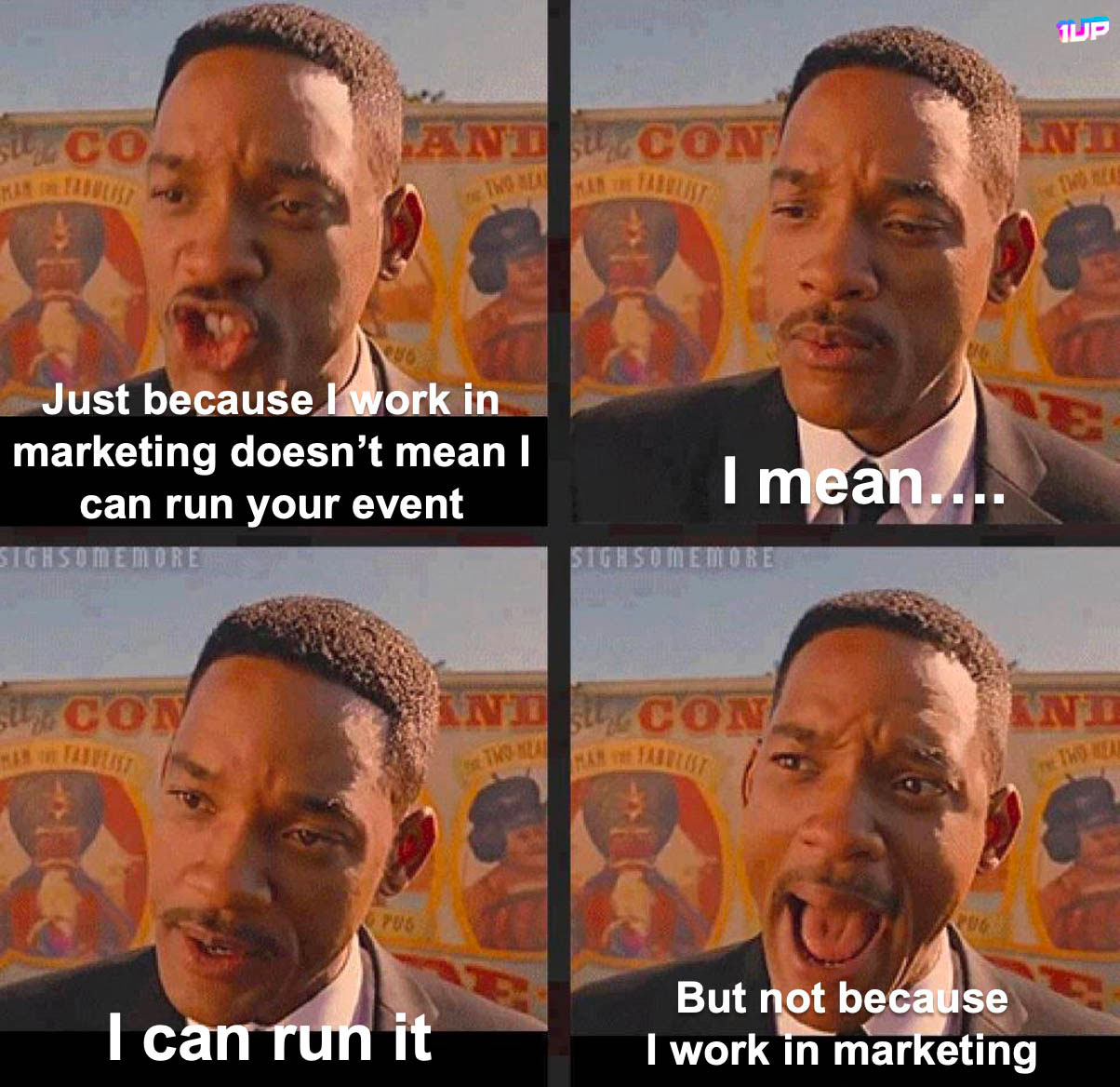
What Makes Field Marketing Tough
There are lots of moving parts that are supposed to build up to one moment. Unlike digital marketing tactics where you can try, fail, and try again repeatedly, events involve lots of planning leading up to a very short window of execution. You only get one shot at getting it right per event.
Planning and executing a conference, even a small one, requires immense focus. It gets especially hectic when the event takes place in another city or country. Booths, equipment, and personnel can be centers for unforeseen costs and delays.
The good news? There are a few common mistakes you can avoid that will improve your chances of making any event a success
Common Field Marketing Mistakes
Not planning meetings around the event
You cannot expect to show up to an event and things just happen. You need to set appointments around the event. Book a conference room or coworking space near the venue. Invite as many people as you can ahead of time. These folks will be bombarded with meeting requests from other companies, so you need to get in early. Don’t stop until you’ve filled every time slot with a customer meeting. By the time you’re done, your calendar should look something like this:

Prioritizing badge scans as a success metric
Badge scans are a great way to annoy people and a terrible way of measuring success. If 200 people visited your booth, and only 1 of them was actually a qualified buyer, would you consider the event a success? I don’t think so. Marketing teams need a quick and easy way to determine if a conference was worth the investment. Badge scans are not it. Figure out what the right metric is for you.
Sending the wrong people to an event
Many of your sales directors will probably want to attend. It can be tempting to send more folks as you think they can help (strength in numbers). But much of an event is spent waiting for booth visitors. You don’t want all of your sales reps just standing around looking for something to do. A good way to test if someone should attend a conference is by asking them to book calls at the event ahead of time – if they book n calls, they qualify to attend.
Spending too much too soon
The stage of your company matters a lot when consider participating in an event. If you’re a startup, you might be able to get something out of an event….but will that really move the needle for you? Even a small conference might set you back over $10,000, not including travel and lodging. Would that money be better spent on Google Ads for a few thousand site visitors, for example? Think about it.
Overpaying for a massive booth
Most businesses will make this error at some point. A big booth sounds exciting and will grab people’s attention, but it’s entirely possible for you to achieve a similar outcome with a small booth. It’s all about how you plan the event.

Neglecting logistics / not planning for the worst
Flight delays, missing equipment, teammates bailing, customers canceling…anything that can go wrong will go wrong, as the saying goes. You have to assume the worst. Bring extra AV equipment, book folks on separate flights, use your imagination. Follow up with everyone ahead of time – customers, event managers, vendors, etc. You get the idea.
Spamming everyone you met
Annoying the people you met on the conference floor is not the way to leave a lasting impression (a good one, that is). On the contrary, it’s probably the best way to end up on their “do not reply” list.
Not following up with quality leads
This is the opposite of spamming booth visitors. You had great conversations over the course of the event, but you failed to follow up with any of them. Now they’ve disappeared into the ether.

How To Get Rapid Results With Field Marketing
Focus on smaller, more intimate events
Marketing teams tend to overdo it on the big international industry conferences (e.g. Dreamforce, RSAC, AWS:Reinvent). The reality is that smaller, regional events can be a much better value. Lower costs, more face-time with customers, easier to manage – our advice is to try some of the smaller shows in your industry next time conference season rolls around.
Setup an event outside the event
A dinner or cocktail hour always works. Keep it accessible and easy to find by staying in orbit of the conference. Try to keep a 2:1 ratio of prospects to employees. A couple hours of face-time with potential customers can be 10x more effective than giving them a coffee mug at your booth.
Get your sales team to pre-book meetings ahead of the event
Activity breeds activity. Get your team to reach out before the conference and set up as many 1-on-1 sidebar meetings as you can.
Follow up quickly and personalize everything
Send those emails as soon as you get back. Don’t wait. Your prospects saw hundreds of vendors and they will forget you if you don’t follow up.
6. Email Marketing
Level of Effort : Low
Time to Value: Months
TLDR: Email real content to real people and you will see real results. Keep sending in low volumes and NEVER EVER buy a mailing list.
Email Marketing Is Still an Important Marketing Channel
While it’s true that spam rates have gone up and attention spans have gone down over the years, sending email blasts will never go out of style.
Email marketing is effective due to its wide reach, targeted communication, cost-effectiveness, high ROI, and personalization. It provides a direct line of communication to a large audience, allowing for precise targeting and segmentation.
Most importantly, email provides measurable results and creates a level of predictability in marketing campaigns.
Great email marketing strikes the right balance between quantity and quality.
This can’t be overstated: quality is everything. Many marketing teams prioritize content and volume over email quality, deliverability, and polish…which leads to really low open rates.
And while it might seem like sending out large quantities of email in bulk improves your odds at being successful, it can be a surefire way to land all your emails in your recipients’ spam folders.

Here are some more things to avoid when executing your email marketing…
Common Email Marketing Mistakes
Buying lists
Do not do this. This is how you end up spam-blocked for life. Do you know what a spam trap is? An email spam trap, also known as a “honey pot,” is an email address specifically created to catch and identify spammers. It is not intended for legitimate use or to receive any legitimate emails.
Spam traps are strategically placed by internet service providers (ISPs), anti-spam organizations, and email security companies to monitor and catch unsolicited and malicious email senders.
Mailing lists are full of spam traps. Buy one and send a message to one of these fake contacts and you’re in trouble. Marketers have been known to end up on Microsoft and Google mailing blacklists. There’s no coming back from that.

Too many links and images
You want to increase your chances of ending up in the spam folder? Put more links in your email. Marketing teams love to fill an email to the brim with content. eBooks, blog posts, videos, etc. That sounds great at first, but remember every link you add will increase the likelihood that an inbox filters you out. Try to keep your emails under 5 hyperlinks.
Not using message previews
This is an easy way to boost CTR rates. Unfortunately, most people don’t use the message preview field and end up with unattractive text appearing next to their subject line. Don’t let your preview text look like this:

Sending low-quality content
Your CMO’s nephew’s dog just got married? Great. No one needs to hear about it. Set a high bar for your email content. Your customers will appreciate you not spamming them with things they couldn’t care less about.
Segmenting too early
If your mailing list is only 200 names, you don’t need to break it up by titles, industry, and seniority. It’s just too early for that. Over-optimizing at this stage will have you spending more time planning an email than actually writing it.
Spamming your contact list
A contact liked your last email. That does not mean they want another four from you this week. There is such a thing as “too much” and it looks something like this:

How To Boost Email Deliverability
Learn the technical aspects of email marketing
This is something most people ignore that can give you a massive edge, provided you take the time to understand the basics. Concepts like digital signatures and sender policy frameworks are critical for email marketing though most marketers are unaware of them.
Test your SPF and DKIM alignment
Using a tool like MX Toolbox you can really figure out how your emails.
Upgrade to a dedicated IP for email sending
One of the biggest things you can do to improve email deliverability is use a dedicated IP address. Most marketers don’t realize that using an email service means you’re sharing an IP address with many other companies. The success of your email marketing may be influenced by the reputation of your shared IP.
A dedicated IP ensures that you won’t have to worry about your deliverability being impacted by other email senders. This capability is available from most email providers such as Hubspot.
Test email deliverability
Tools like GlockApps will help you with spam testing your emails. In a few minutes you can find out exactly what inboxes put you in “Spam” and adjust your strategy accordingly.
Tools To Help Your Email Game
- Validity for email marketing performance and list validation
- GlockApps to test spam rates
- MXToolbox for validating email headers and configuration
- Google Postmaster tools for G Suite users to monitor email sending performance.
Want more 🔥 guides like this?
Subscribe to our blog for early access to content like this.
7. Product Marketing
Level of Effort: High
Time to Value: Medium
TLDR: Customers expect to see your products. Make that difficult, and you’re fighting an uphill battle.
Great Content Is What Pulls In Users
Successful businesses prioritize great product marketing. For customers, nothing is more appealing than seeing, hearing, or touching the thing they are going to pay money for.
Demos, videos, guides, walkthroughs…this content drives more user interest than any blog post, data sheet, or trade show ever could.

Common Product Marketing Mistakes
Not planning ahead
Recording demos, creating walkthroughs, taking screenshots…it all takes time. Marketing teams often underestimate the level of effort necessary for great content. You don’t want to end up with tepid product launches, so here are some of the key things to be aware of at all times:
- What your product is currently capable of
- How to visualize key capabilities in a way your customer can understand
- Which problems the capabilities solve for the user
- What messaging to use to describe key features
- What’s on the roadmap and how it will impact the customer
Not knowing the state of the product
In many orgs, the marketing department is surprisingly unaware state of the product. This leads to noticeable differences between what is advertised and what is possible (see: IBM’s Watson) – which inevitably leads to buyer’s remorse, or worse, customer churn. This is an area where AI tooling can help automate product marketing knowledge.
Not showing your product at all
This is ok in the early stages of a company but does not scale as you grow to compete with bigger players. Mature companies who intentionally opt out of showing their products and services or hiding them behind a gated form are destroying their own marketing funnel. Most reasonable people don’t need all of this information to show a product screenshot:

Failing to differentiate
Your product does X as opposed to…what? Marketing teams often play a game of “We do that too” when conveying product capabilities. These days, it’s not enough to show that you do what everyone else does. Buyers are overwhelmed with information and need to understand how you’re different.
Not SEO-optimizing your content
If you upload a product demo video to YouTube and title it something generic like “Product Walkthrough,” you’re missing out on free traffic. Always optimize your product marketing content for search. Videos, blog posts, infographics, all of them need to be readable by search engines.
Make SEO the priority. For example,
- Bad title: Latest Demo of our Web UI
- Good title: How To Secure Windows Login Experiences With Our Desktop App

Outdated content
There’s nothing wrong with showing last year’s great demo. But if your UI is totally different today, you’re selling yourself short on what could be a more compelling feature set. Always keep the latest screenshots, demos, and messaging in your content marketing arsenal.
Creating content and not pushing it
You made an awesome demo? Wonderful! So why was it only posted once? You need to double, triple, quadruple down on your content. Stagger your posts on social media with different days/times. Combine screenshots and videos for more variety.
How to Market Product Effectively and Quickly
Make a ‘Why Us’ page
Not all businesses will utilize an Us vs. Them comparison. But everyone can benefit from a powerful ‘Why Us’ page. Here’s a great guide on how to do this.

Don’t make it too sales-y
Content marketing is an opportunity to speak thoughtfully about what you know about your industry and problem space. You don’t have to turn everything into a sales pitch.
Don’t be afraid of comparisons
Competitor comparisons give your customer something they can use to push your product when evaluating competitors internally. You want the customer helping you compete. Pages like these are a great way to make it easier for them:
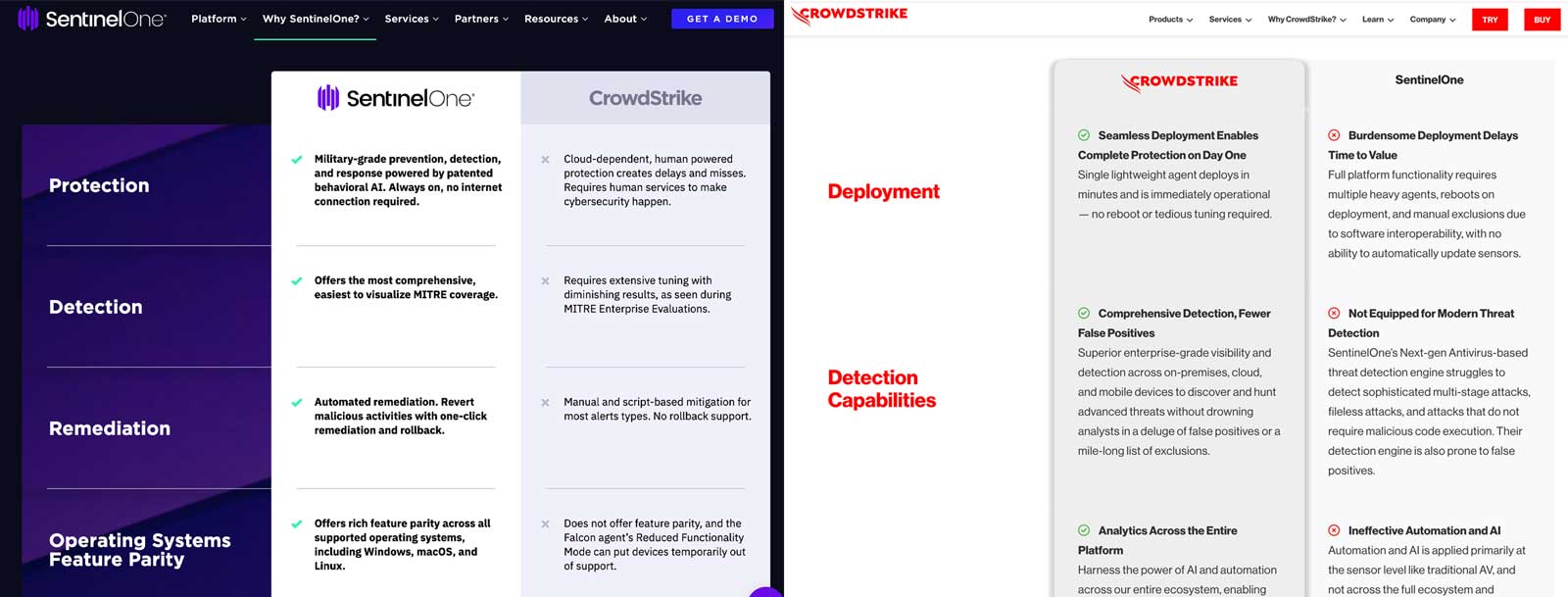
Always focus on the problem you are solving
The further away your product content drifts from the customer’s problem space – the worse it will perform. With any product marketing campaign it’s a good idea to to prioritize reiterating the problem, reminding the customer how you solve it, and why it’s better than the status quo.
Know your competitors inside out
Get start on competitive analysis early. A deep understanding of your competitors will unlock new angles and positioning to market with.
Be prepared to respond to competitive proposals
Competitive content is not a nice to have, it’s a need-to-have. At some point your sales team will receive Request for a Proposal (RFP) from a customer who wants to better understand the competitive landscape. That’s where this content really makes a difference. So wether you choose to respond manually or utilize an AI RFP tool, make sure you emphasize the key selling points that make your product stand out.
Keep your copy simple
Crappy, jargon-y copy is the root of all failed product marketing. Avoid creating things that sound like this:
Additional Tools That Can Help
8. Analytics
Level of Effort : Low
Time to Value: Days
TLDR: Start tracking on Day 1 and focus on a couple of key metrics. Don’t overdo it – there’s just too much data.
Good Marketing Analytics Is Now Table Stakes
What’s your daily traffic? Average conversion rate? What’s your biggest source of website visitors?
You don’t need to answer these questions off the top of your head, but you should have this data readily available. A great marketing program relies heavily on understanding not only where customers come from but also how they interact with the product after they’ve converted. This knowledge is the foundation of product-led growth marketing.
Good Analytics is Still Tough
There’s a ton of data and it can feel overwhelming. CTR, Bounce Rate, Time on Page, CAC, LTV, Form Conversion Rates, Exit % – you’d be forgiven for wondering what all these metrics even mean?
Additionally, marketing attribution is still a notoriously difficult task. Entire libraries of blog posts have been written on the topic of knowing where your leads come from. It’s never an exact science but you can get pretty close. Our view is that the sooner you put the plumbing in place the better off you’ll be down the line.
Common Marketing Analytics Mistakes
Misconfiguration
Putting tracking scripts in the wrong place, double counting, tracking hits from your own company – there are quite a few things that can go wrong here. The best thing to do is to move slowly and focus on implementing one tracking method at a time.
Our recommendation is to use Google Tag Manager. As complicated as the UI might look, it’s actually not so bad once you get the hang of it. Tag Manager can simplify the use of multiple tracking tags as shown in this guide from SemRush.
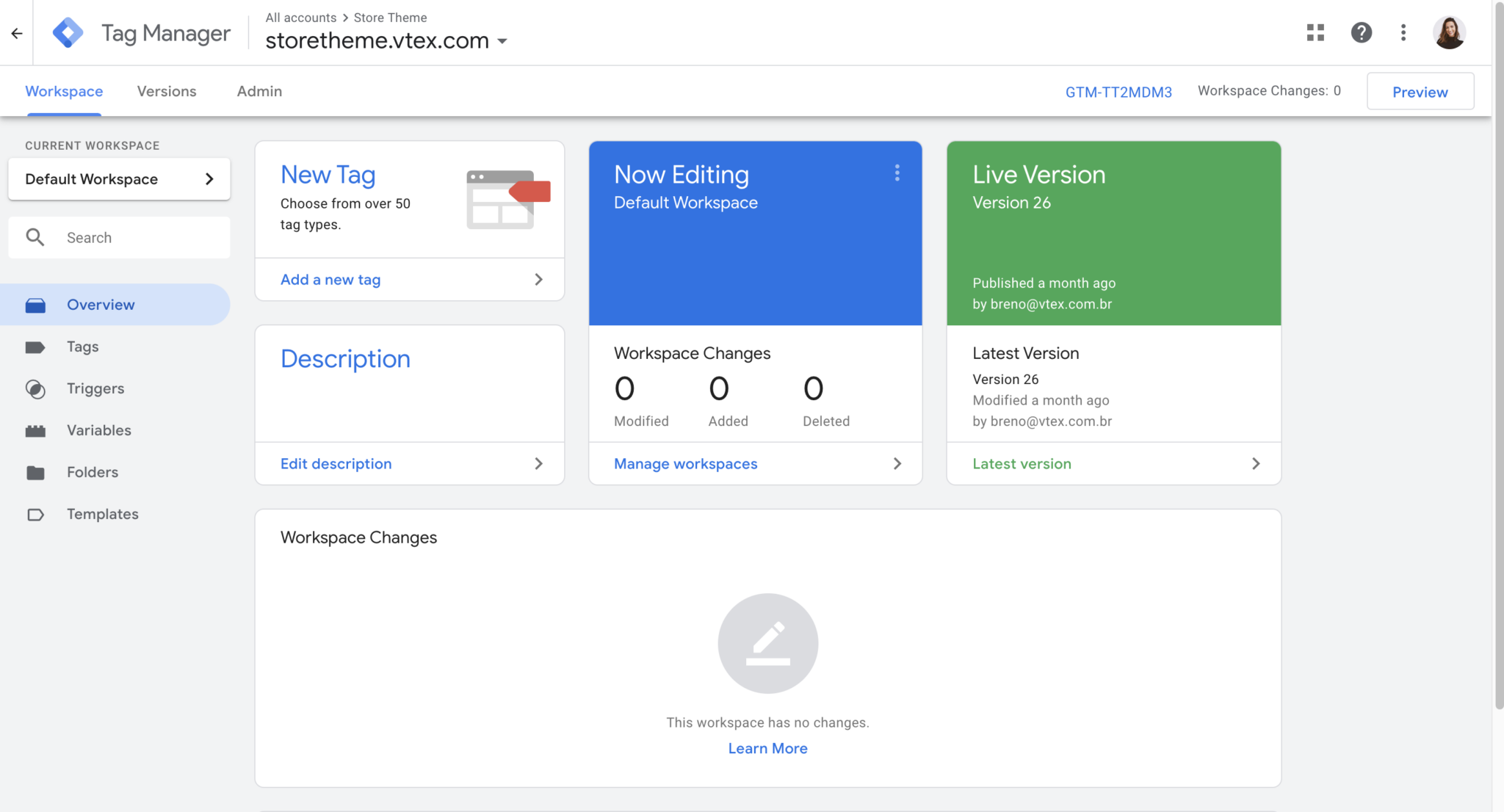
Not knowing where your leads come from
A bunch of people just signed up, but do you have any idea where they came from? This is why you need to properly tag conversion events. The simplest way to get this right is to make sure conversion form signups are tracked as an event. You don’t need to monitor every button click or scroll event on your site. Get the signups right first.
Tracking too much
Creating big fancy reports is fun but what’s the point if you can’t do anything with that data? Focusing on a few key metrics such as Bounce Rate or Time on Site is a much more manageable experience.
Overthinking what is an MQL, SQL, PQL, etc.
This is easy to get caught up in. I get it – you want to say “MQLs increased by 48% last week!” The truth? Most people around you will just be confused by it.
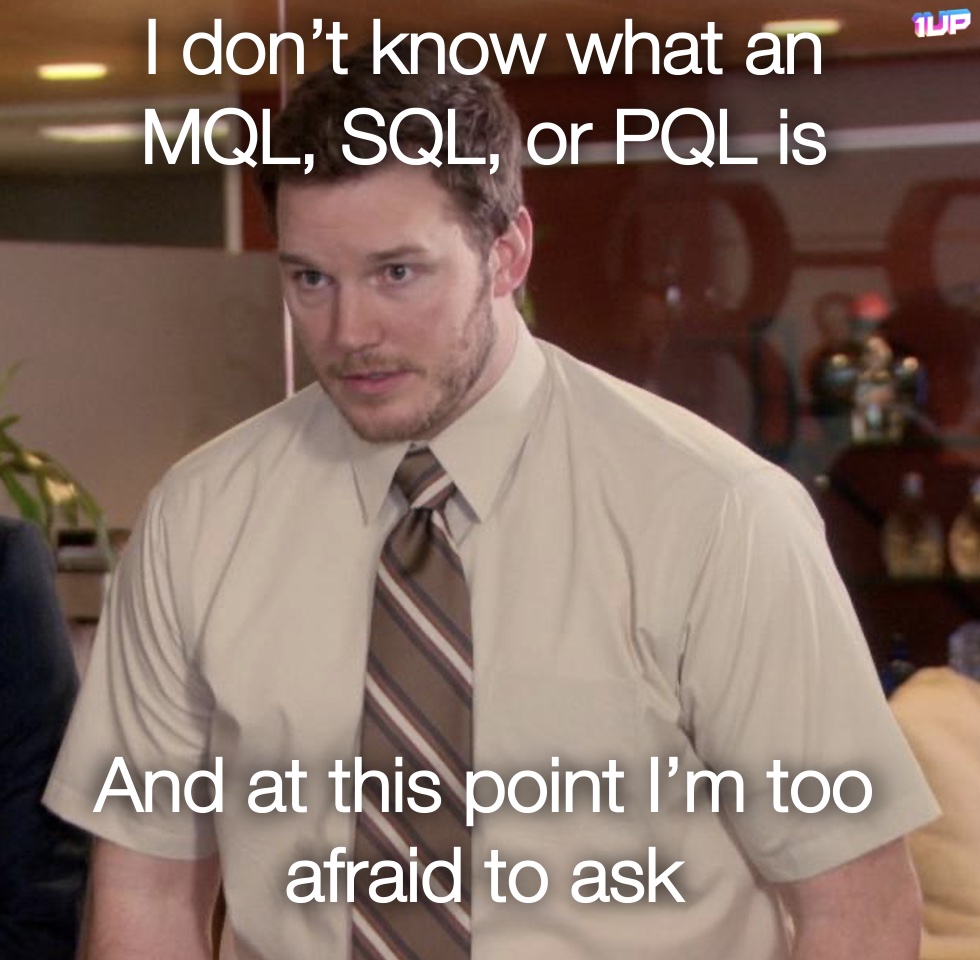
Obsessing over disparities
Hubspot might show 10 conversions while Google Ads shows you had only 8. This can drive a marketing manager crazy. Remember, there will always be disparities between analytics sources. Blame it on cookies and move forward.
How To Get Value Out of Marketing Analytics
Setup Google Analytics on Day 1
You can do this alone or with your developer but do it early. Here’s a good guide from Hootsuite on getting it up and running quickly.
Understand multi-step attribution
Here’s a simple guide on the topic.
Exclude your IP address
You had 200 visits, but half of them are from your marketing team. You need to block your IP from registering as hits. This obviously won’t ensure none of your teammates are tracked as web visitors, but do it anyway. In some analytics platforms, this might be set by default. In the case of GA, it’s done by going here:

- Follow the instructions to create a new filter for your view.
- Leave the Filter Type as Predefined.
- From the Select filter type menu, select Exclude.
- From the Select source or destination menu, select traffic from the IP addresses.
- From the Select expression menu, select the appropriate expression.
- Enter the IP address or a regular expression. See the examples below.
Focus on 1-3 key metrics you can work on
You can’t overdo this. You need to focus on a few things at a time.
- Want more engagement? Focus on improving average time on site, reducing your exit rate, and increasing pages/visit.
- Want more downloads? Ditch the gated form and let people download content for free.
- Want more conversions? Focus on improving your forms. Try adding or removing fields, or split testing landing pages.
Test your data in real-time
Here’s a simple way to see if the data is flowing.
- Take your phone off Wi-Fi.
- Open an Incognito window in Chrome (Private Window in Safari).
- Head to your website.
- Perform a conversion event.
- Check real-time stats in Google Analytics.
- Select “Goal Hits (Last 30 Min)”
- You should see your conversion event as a blue bar. If you don’t, then something went wrong.
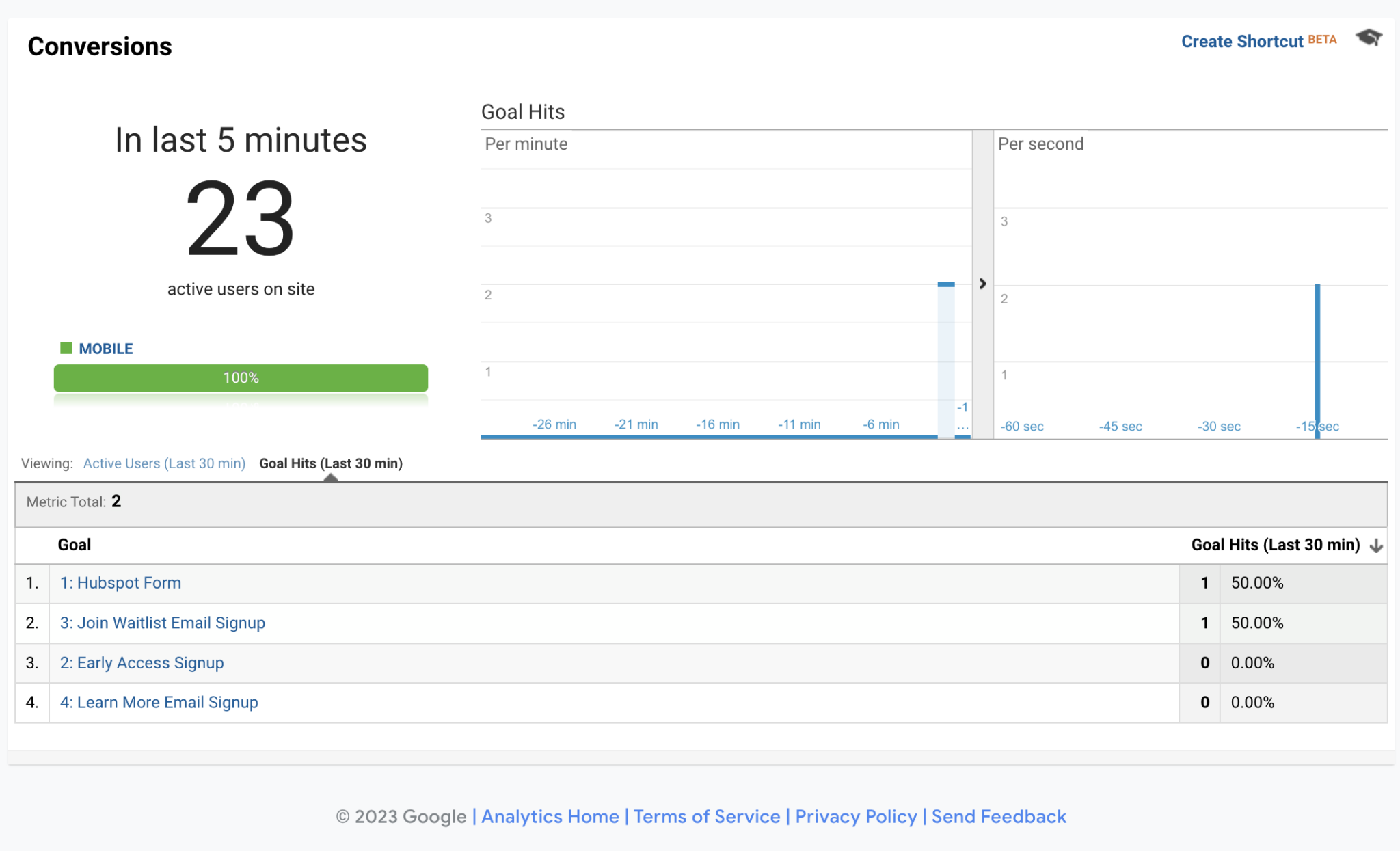
Add product analytics tools
It’s no longer enough to know where leads are coming from. You need to know what they’re doing after they’ve purchased. In the PLG era, product usage data has become the foundation of great marketing programs. Tools like Pendo, MixPanel, and Heap are good examples.
Avoid thinking too much about lead scoring… for now
Not everything can be scored, and that’s OK. It’s tempting to apply a number to every possible interaction but it really won’t move the needle much. In most cases your leads are either qualified to buy or they aren’t. A small marketing team shouldn’t overthink the spectrum of qualification and focus more on getting the most likely buyers into the sales funnel.
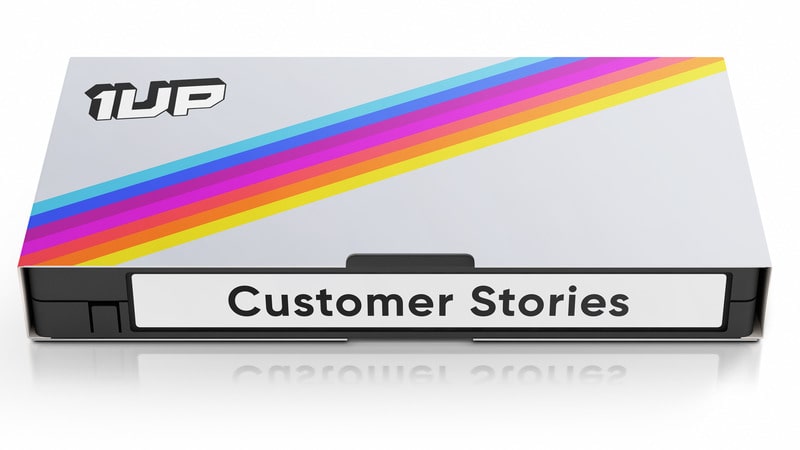

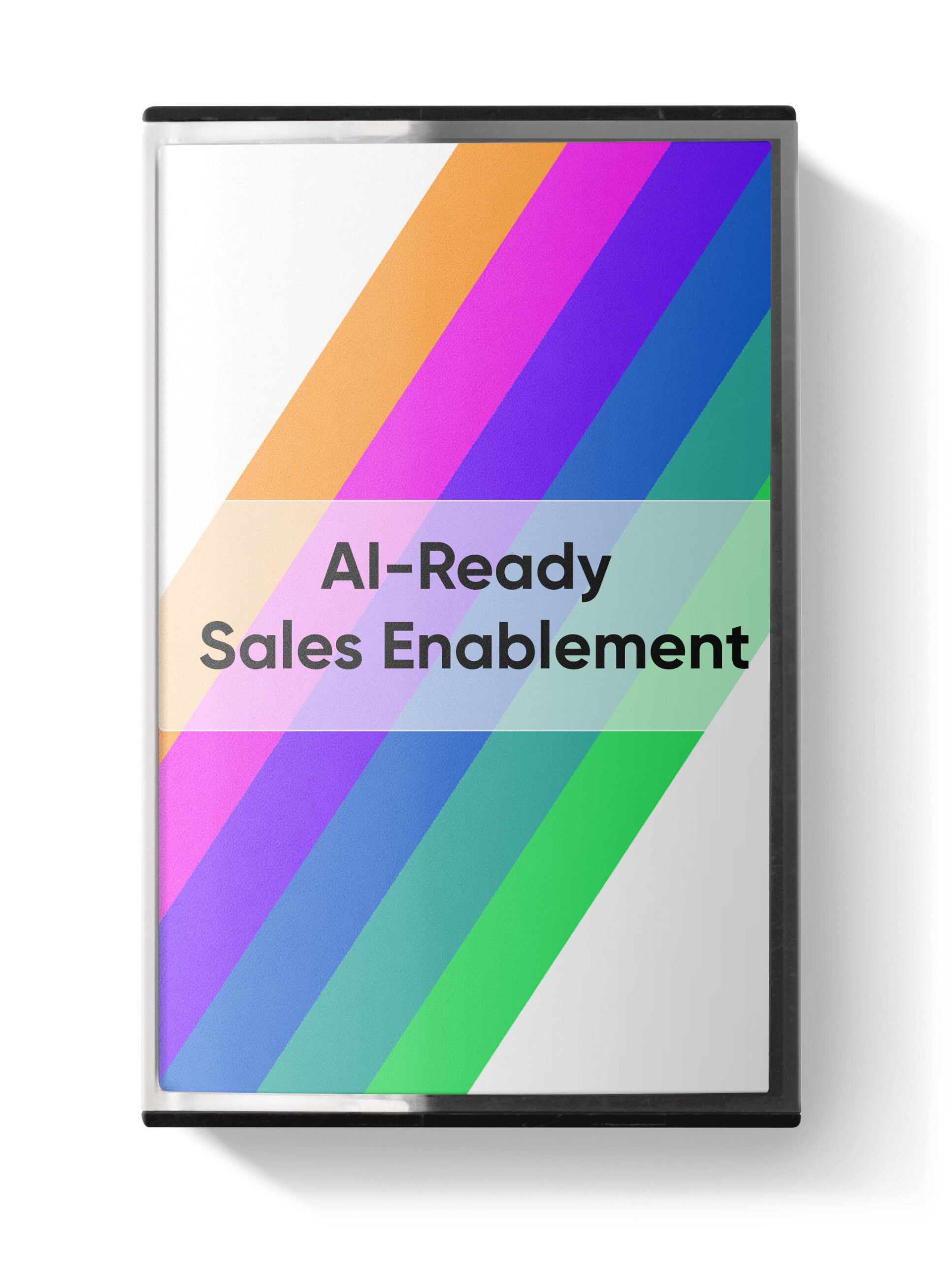
 Instagram
Instagram 

